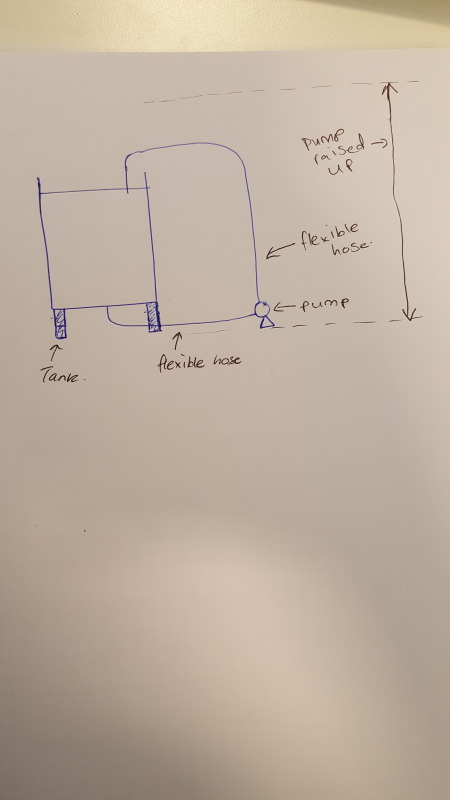Hi,
I have been given the task by my company to find the NPSHr for our pumps.
The way I have been carrying out the test procedures is by raising the pumps above the vessel it is connected to and to record the TDH as the inlet pressure decreases.
The results I get are bizarre as I expected the TDH to stay steady and then drop as the machine is lifted. But what has happened is that the TDH rises as the machines reaches the top of the vessel, and then drops as the machine rises higher then the tank and liquid level.
So I have recorded the NPSHr to be when there is a 3% drop in TDH from when the TDH is at its peak. But the 3% TDH drop value when raised above the vessel is the same as the TDH value when the machine is on the ground. So this has confused me.
Is there a reason for why this happens??
I have attached a diagram of my set up.

I have been given the task by my company to find the NPSHr for our pumps.
The way I have been carrying out the test procedures is by raising the pumps above the vessel it is connected to and to record the TDH as the inlet pressure decreases.
The results I get are bizarre as I expected the TDH to stay steady and then drop as the machine is lifted. But what has happened is that the TDH rises as the machines reaches the top of the vessel, and then drops as the machine rises higher then the tank and liquid level.
So I have recorded the NPSHr to be when there is a 3% drop in TDH from when the TDH is at its peak. But the 3% TDH drop value when raised above the vessel is the same as the TDH value when the machine is on the ground. So this has confused me.
Is there a reason for why this happens??
I have attached a diagram of my set up.

